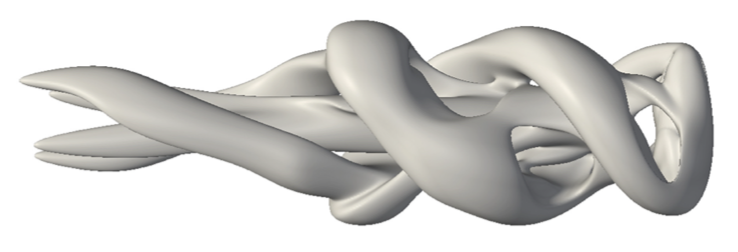About
The aim of the Colloquium is to present the latest advancements in the understanding of turbulent dispersed multiphase flow in the presence of moving interfaces (i.e. particles, bubbles, or droplets), and to address the current progress and future challenges in the understanding of these flows through advanced numerical and experimental techniques.
In turbulent multiphase flows, the chaotic and multiscale dynamics of a turbulent flow is directly interacting with interfaces that may move and deform with the flow, giving rise to rich and often spectacular dynamics. Moreover, in many real applications, the dispersed phase not only exchanges momentum with the suspending fluid, but also mass and heat, often in the presence of phase change, surfactant molecules, non-Newtonian effects, in addition to possibly even more complex phenomena. This complexity and the wide range of relevant practical applications involving these flows have inspired scientists to tackle these systems in various ways. From a physical modeling perspective, particle sizes pose great additional challenges, as the dispersed phase dynamics cannot be realistically modeled with a so-called point-particle approach (i.e. assuming that interphase momentum, mass, and heat transfer occurs at a single point) or as a continuum, since scale separation can be limited.
Thanks to recent advances in the development of numerical methods, experimental techniques, and the growing computing power, researchers are now able to produce and analyze three-dimensional and time-resolved high-quality data with unprecedented detail, which is essential to unveil the complex dynamics of these flows at all scales. Notable developments regarding numerical modeling are the exploitation of large amounts of computing power to perform interface-resolved simulations, where the interphase coupling is imposed numerically at the interface between the different phases. This type of simulation provides very detailed data for the entire spectrum of space and time scales, but is in general restricted to relatively large dispersed particles/bubbles/droplets, simple geometries and relatively low Reynolds numbers. Recent advances in experimental techniques allow for detailed fluid and/or particle velocity measurements in setups that are still unachievable with numerical simulations, e.g. using optical measurement techniques such as particle image velocimetry (PIV) with index matching, and other emerging non-optical techniques such as using ultrasound or magnetic resonance. The latter two have shown great potential for measurements in cases where, for instance, the concentration of the (opaque) dispersed phase is too high for optical measurements to be possible.
The Colloquium welcomes contributions that exploit experimental, numerical, and physical modeling approaches to provide a better understanding of the physics of these flows, and encourages the interaction between participants with these different approaches. Examples of topics within scope are turbulent multiphase flows with a complex continuous phase (e.g. non-Newtonian or surfactant-laden multiphase flows), heat and mass transfer through deforming interfaces, and phase-changing multiphase flows.

